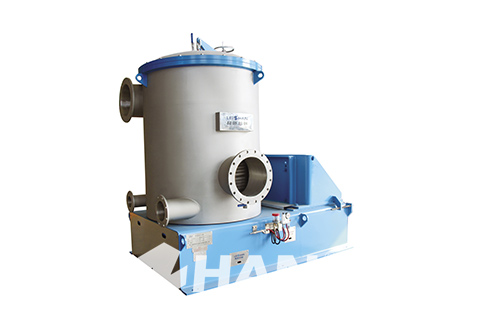ZNS Series M.C. Pressure Screen

Application
ZNS Series M.C. Pressure Screen, the outflow pressure screen for pulp and paper machine is mainly used for coarse and fine screening of various waste paper pulp. This Mid Consistency Pressure Screen is a kind of advanced pulp screening equipment in modern world. It is a new generation of pulp pressure screen developed by Zhengzhou Leizhan, absorbing the international advanced technology. Compared with the general Low Concentration Pressure Screen, the Mid Consistency Pressure Screen has the advantages of strong adaptability, energy saving, water saving and high production efficiency.
Structure Features
- Double Mechanical Seal from American brand safeguards the bearing from Japan. Seal water flow automatic detection alarm device makes sure the system runs safety. Interlock system enables the service life of equipment.
- European standard pulleys. Automatic oil injection made from Korea and pressure water alarm device from from Finland, sensor from Germany. Convenient disassembly and assembly, less lose of fiber. It can reduces the amount of water cycle and system energy consumption.
- Various rotor pieces, efficient and energy-saving.
- Weir plate structure, overflow pulp feed, reduce heavy impurities wear sieve drum.
- Heavy impurities discharge pipe ensures the screen basket runs safely.
- Manual argon arc welding, perfect welding seam.
Main Specification
| Model | ZNS0.3 | ZNS0.6 | ZNS0.9 | ZNS1.2 | ZNS1.5 |
| Screen area | 0.3 | 0.6 | 0.9 | 1.2 | 1.5 |
| screen hole size | φ1.6-3.5mm | ||||
| production capacity t/d | 50-80 | 90-160 | 135-250 | 180-320 | 200-380 |
| inlet pulp consistency | 1-4% | ||||
| motor power(kw) | 22-55 | 30-75 | 37-90 | 45-110 | 55-132 |
| Model | ZNS2 | ZNS2.5 | ZNS3 | ZNS4 | ZNS6 |
| Screen area | 2 | 2.5 | 3 | 4 | 6 |
| screen hole size | φ1.6-3.5mm | ||||
| production capacity t/d | 260-500 | 300-600 | 400-700 | 500-1000 | 800-1500 |
| inlet pulp consistency | 1-4% | ||||
| motor power(kw) | 75-160 | 90-200 | 90-220 | 132-280 | 250-400 |
Capacities vary depending on feed size, feed rate, operating conditions, desired product output, characteristics of feed material, and equipment configuration
Download complete technical literature [PDF]